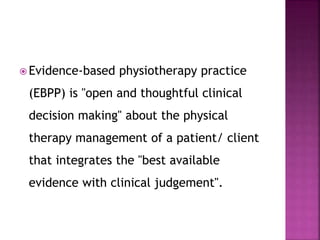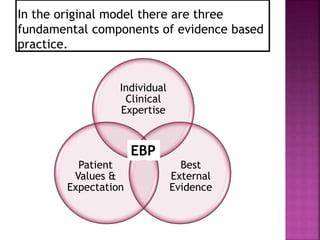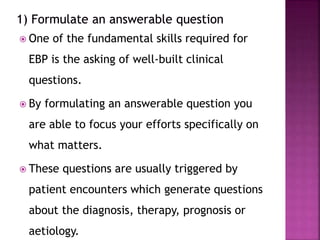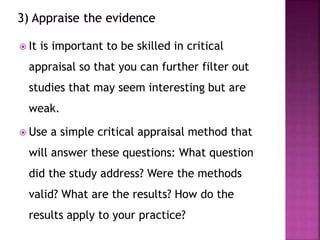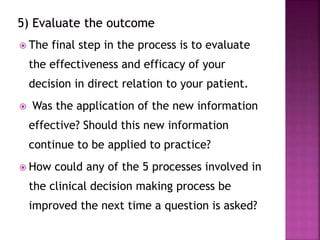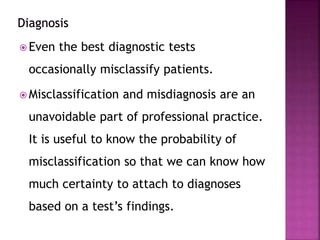The document discusses evidence-based practice (EBP) in physical therapy. It defines EBP as integrating the best research evidence, clinical expertise, and patient values and describes the 5 steps of EBP as formulating a question, finding evidence, appraising evidence, implementing evidence, and evaluating outcomes. The document also explores barriers to EBP, such as lack of time and understanding of statistics, and facilitators, like access to online research summaries.




